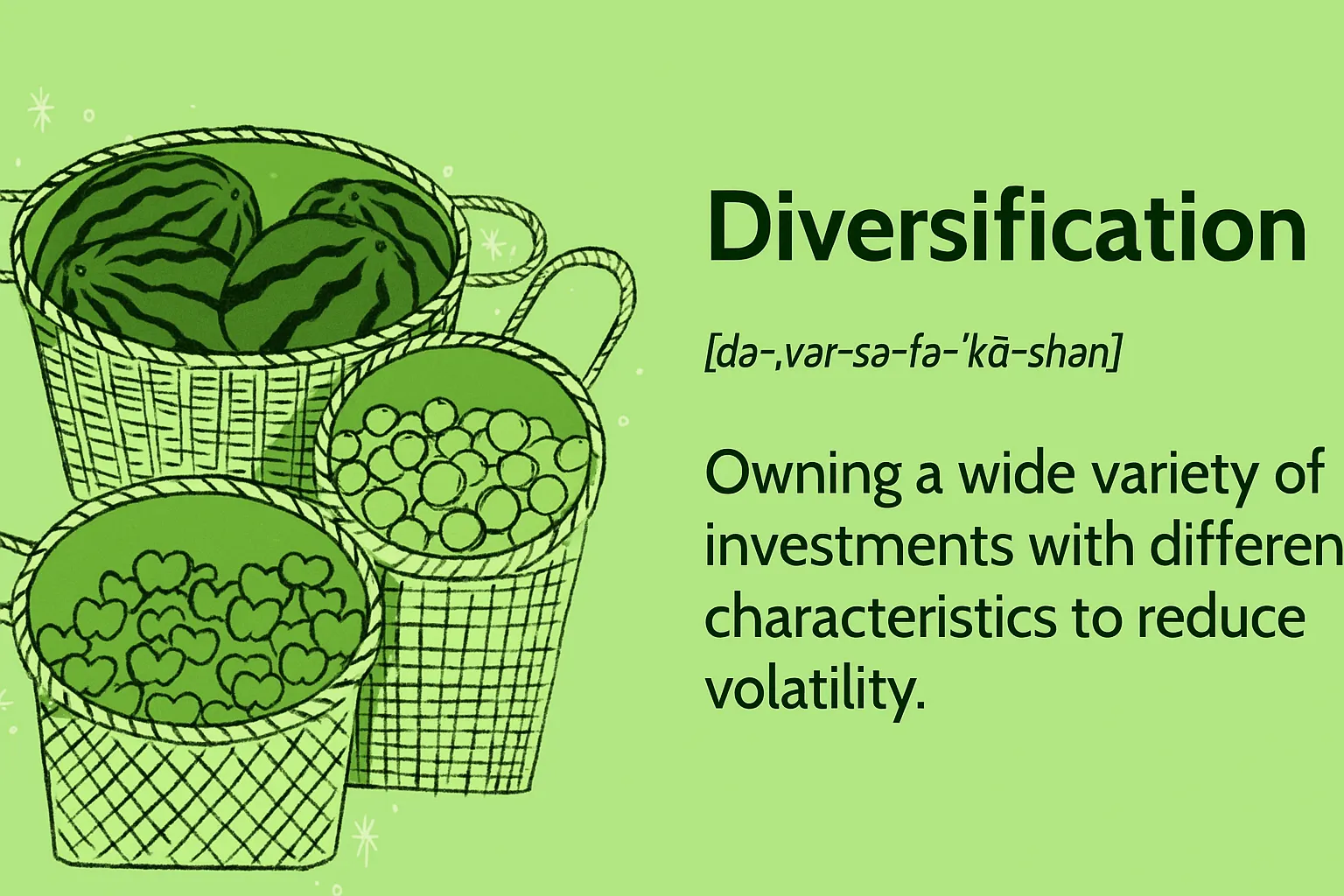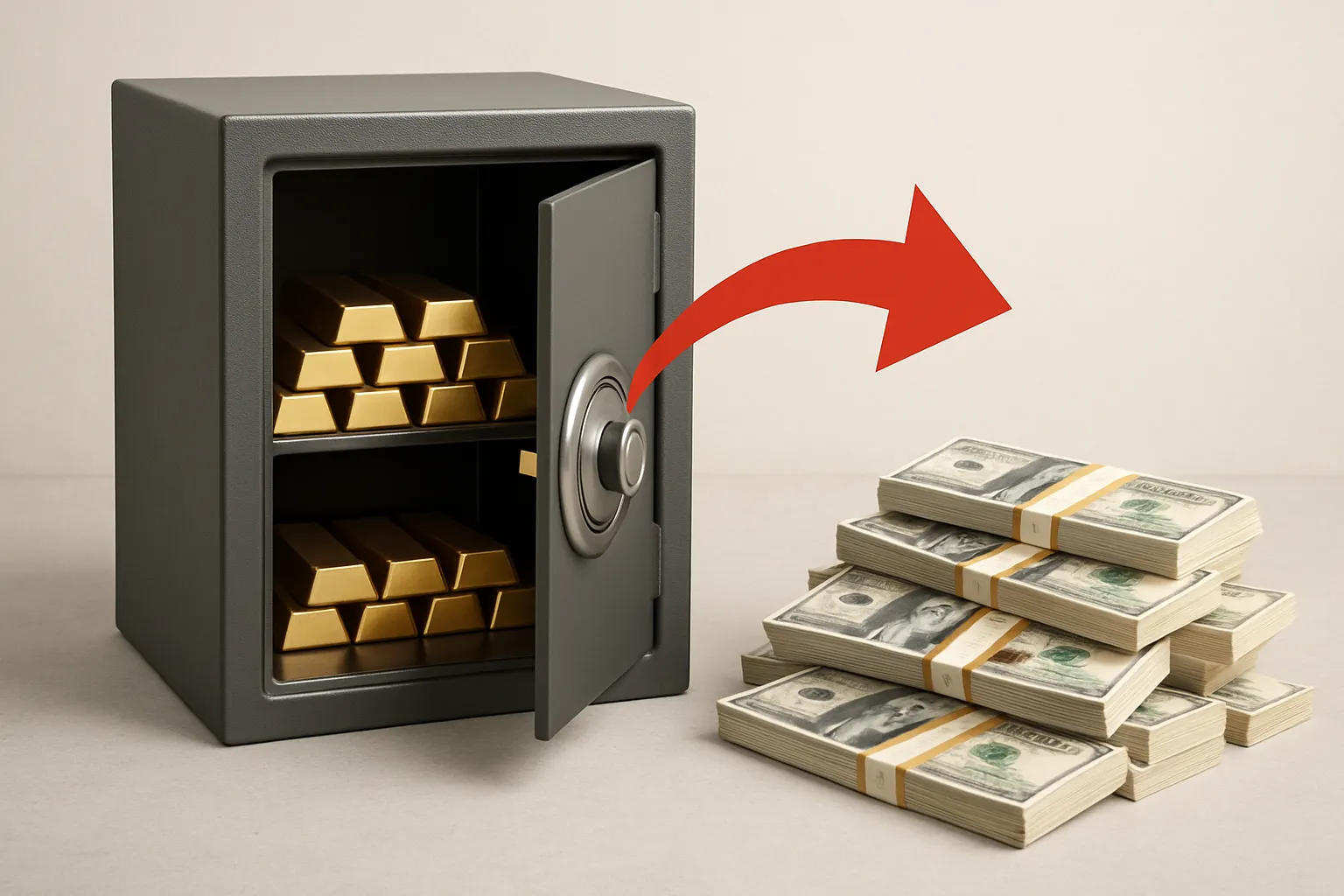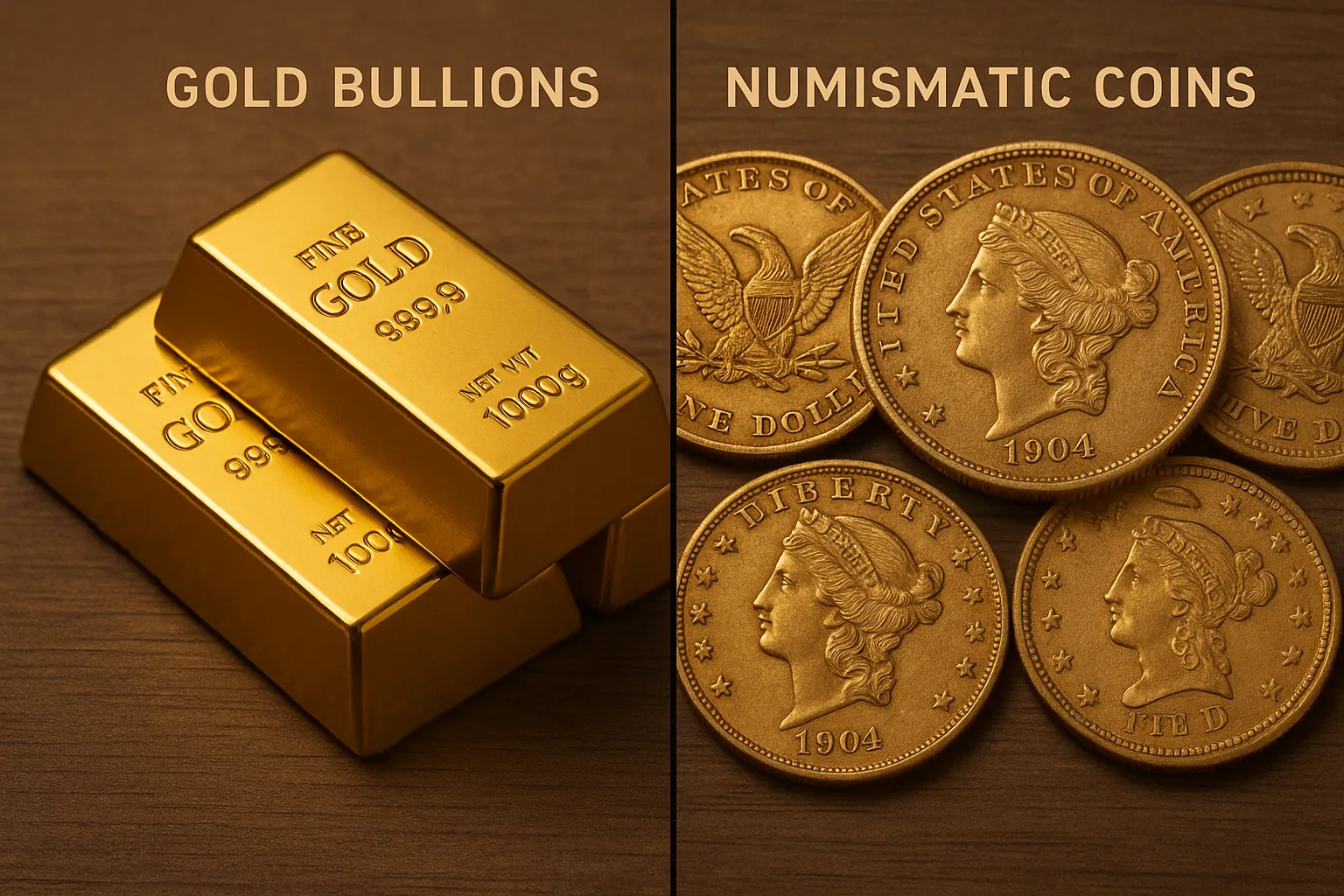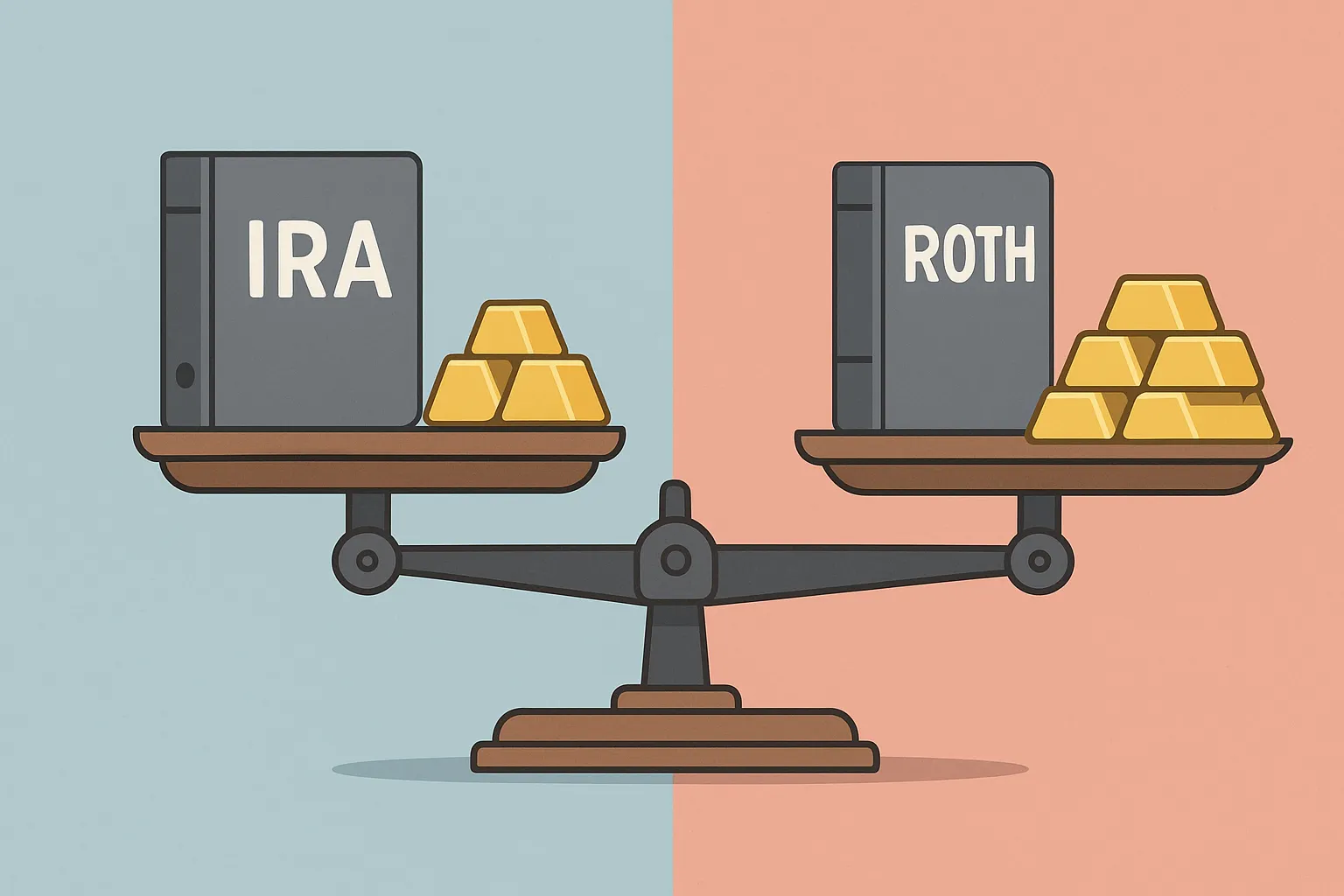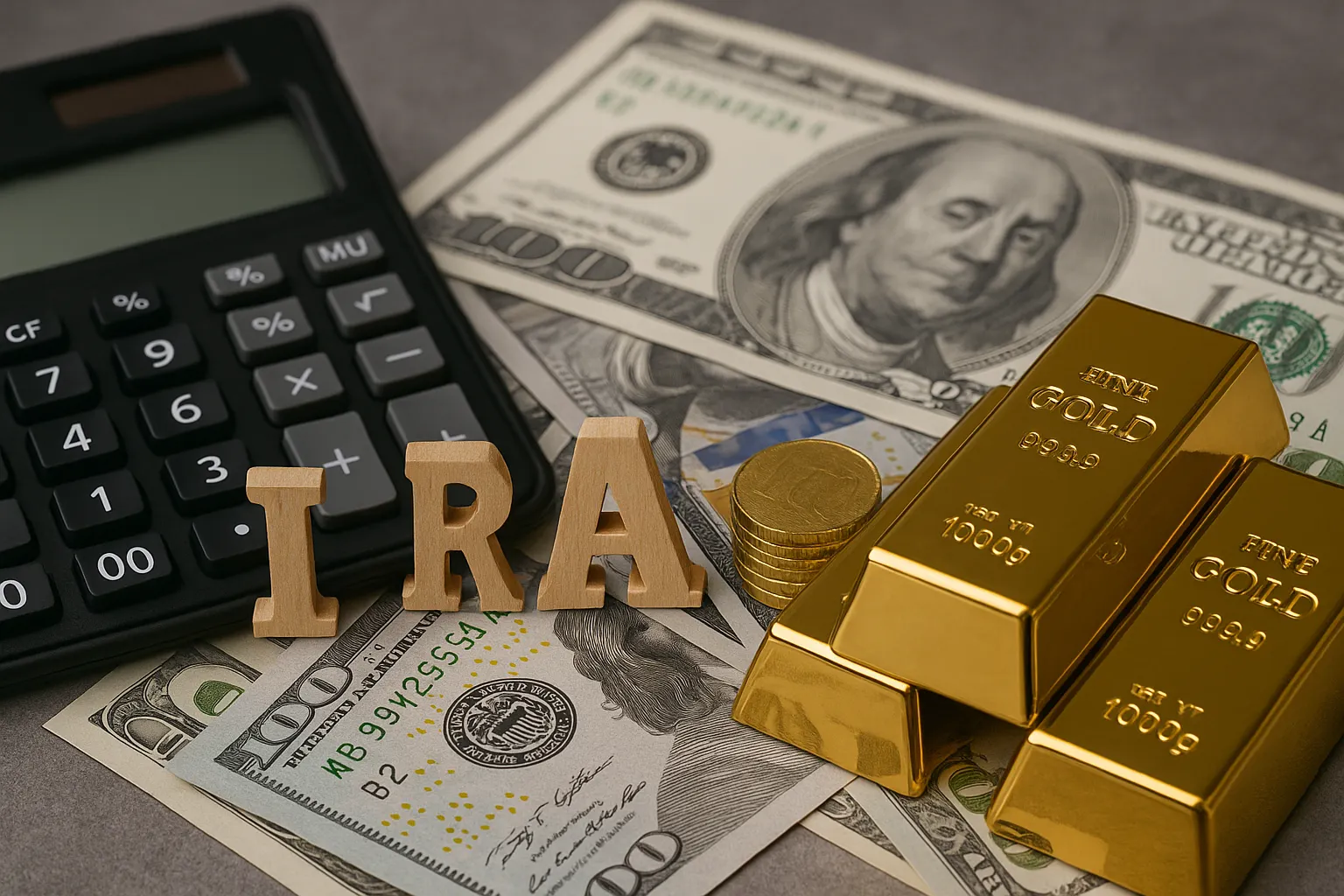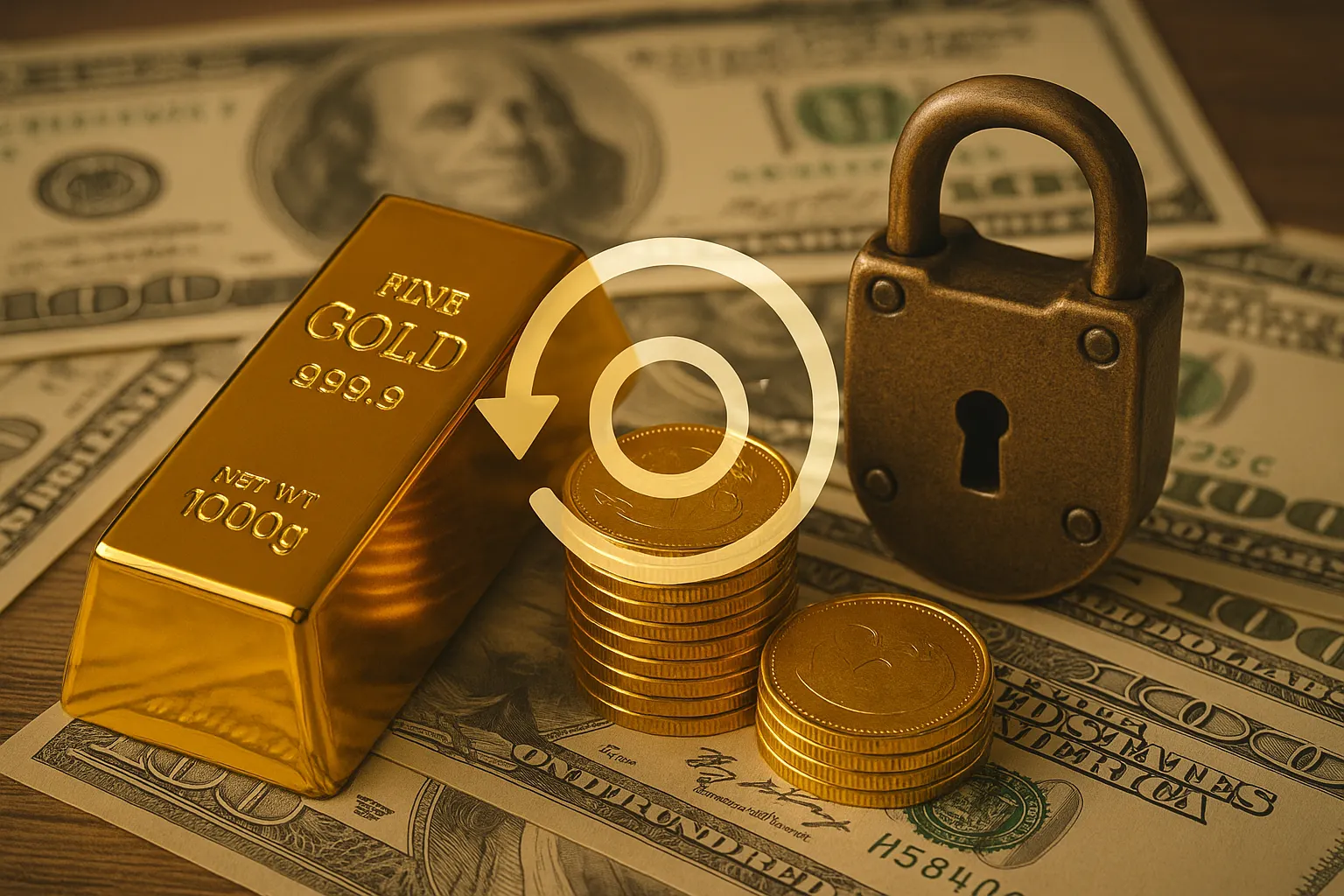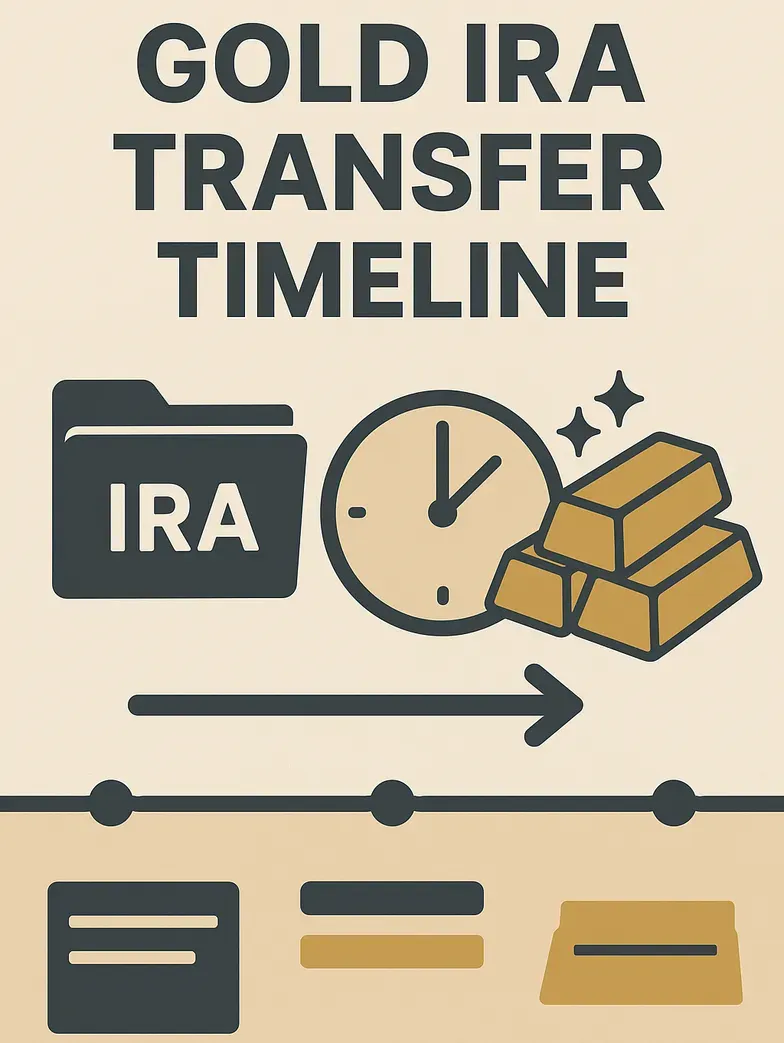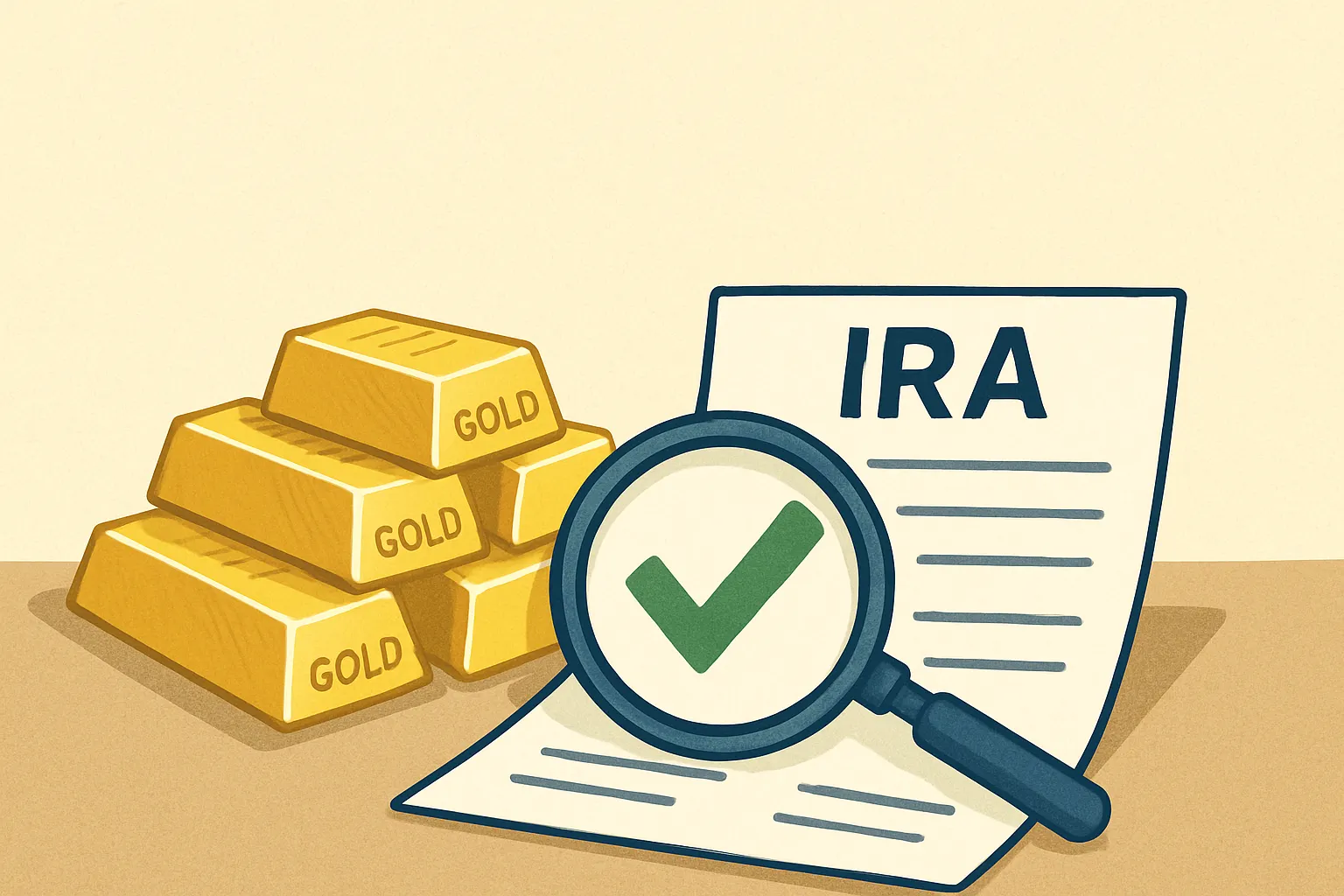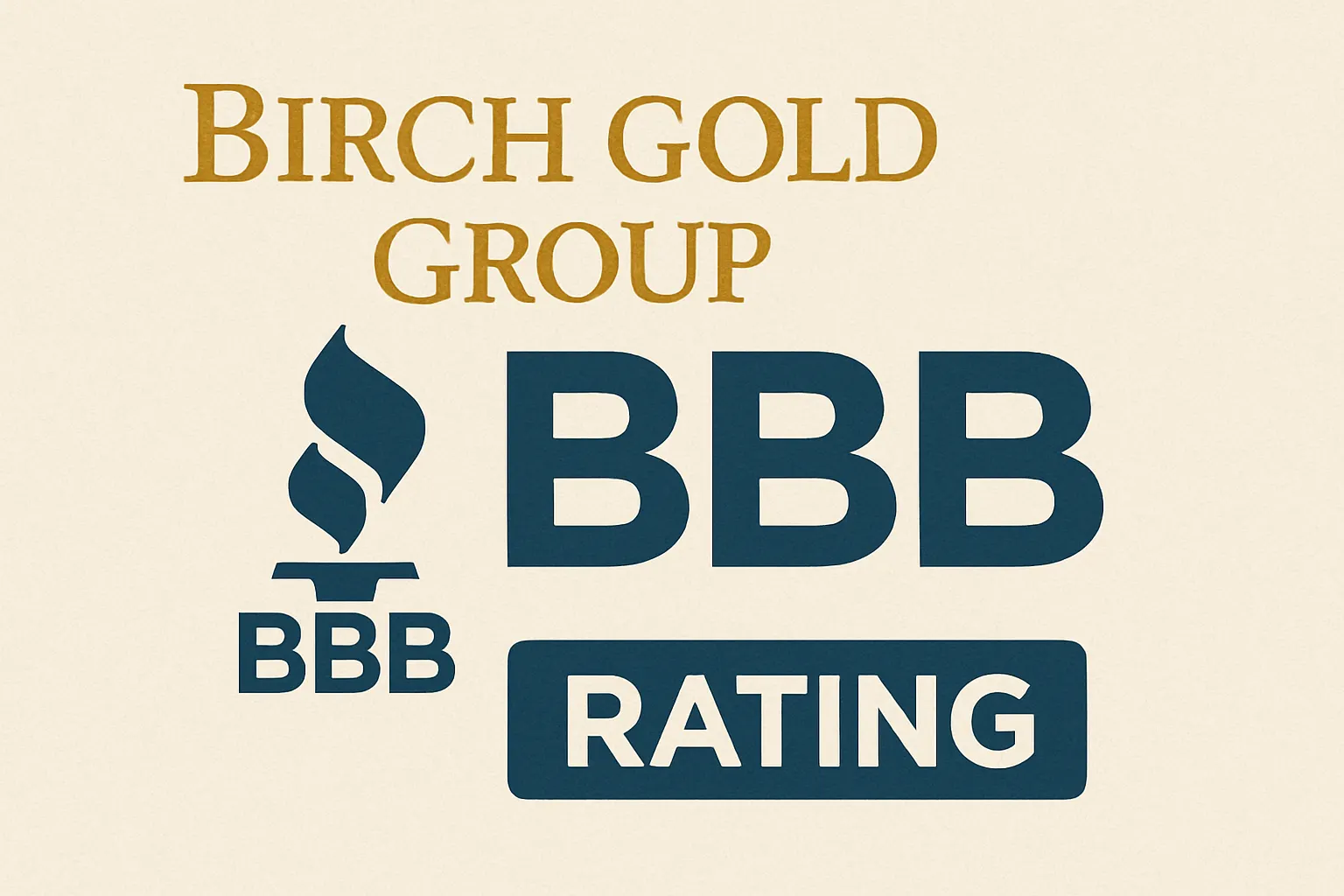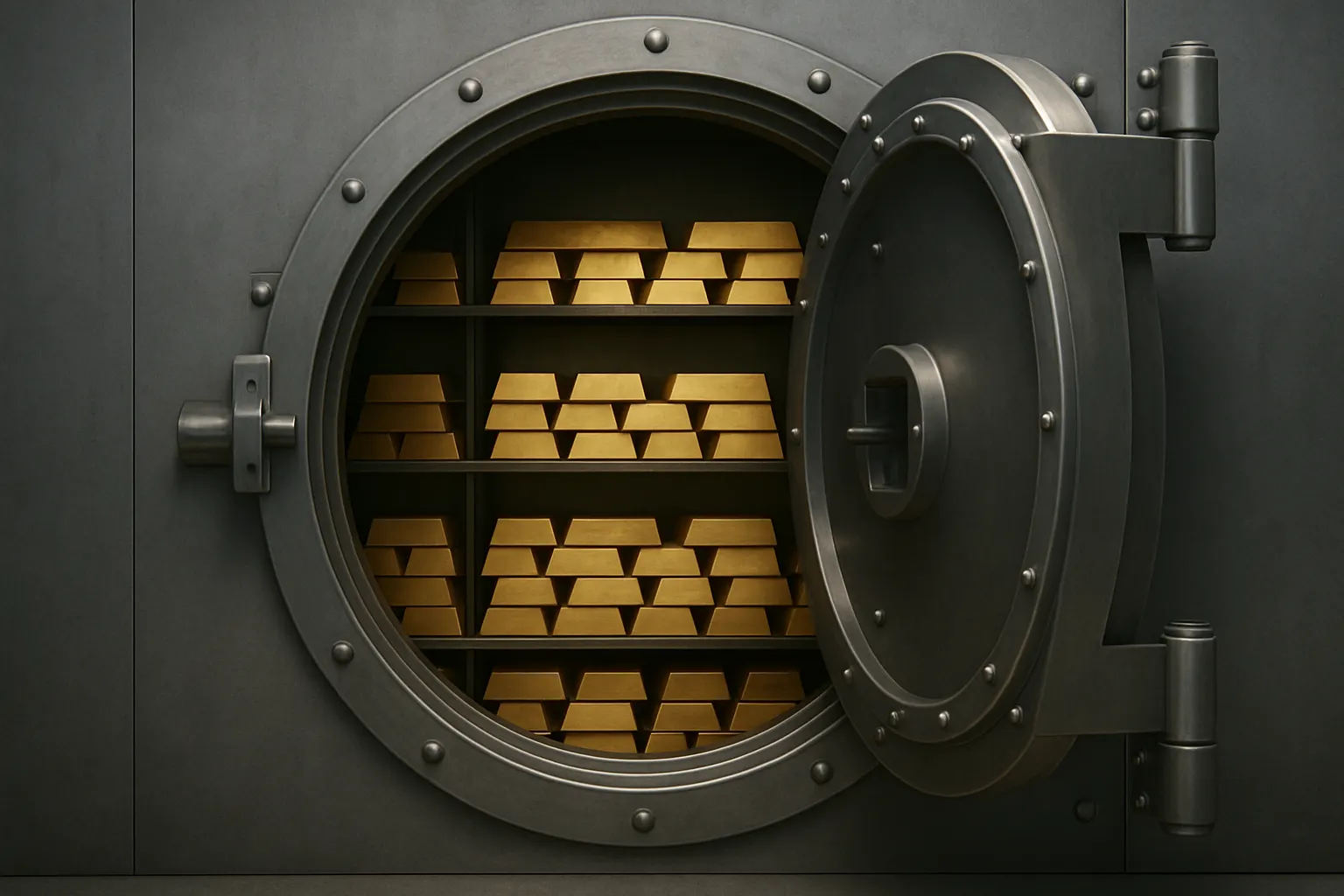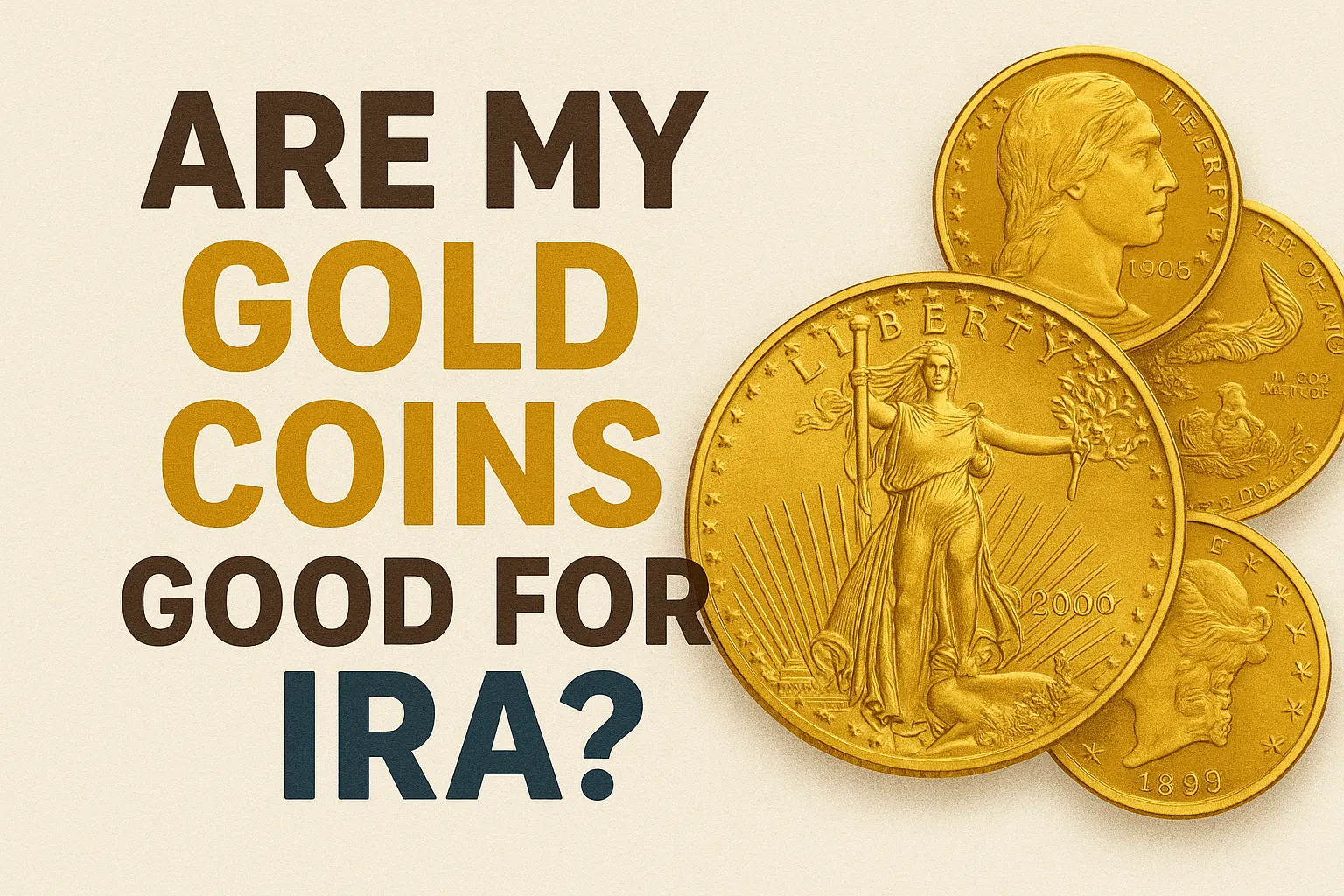Should I consider transferring my retirement savings to a Gold IRA?
With the U.S. dollar losing massive purchasing power over recent decades, many retirement savers are questioning traditional investment strategies. But Gold IRAs come with hidden costs and limitations that could surprise you before making the switch.
Key Takeaways:
- Gold IRAs offer protection against currency debasement, with the U.S. dollar experiencing significant purchasing power decline over decades
- These retirement accounts have shown historical performance while maintaining low correlation with traditional assets like stocks and bonds
- Higher fees and no dividend income make Gold IRAs better suited for portfolio diversification rather than complete retirement replacement
- The transfer process requires specialty custodians and IRS-approved storage facilities, adding complexity but maintaining the same tax advantages as traditional IRAs
Economic uncertainty has retirement savers questioning whether traditional investment strategies still protect their financial future. Between inflation concerns, market volatility, and currency debasement fears, many Americans approaching or already in retirement are examining alternative ways to safeguard their savings.
Gold IRAs Could Shield Your Retirement from Dollar Decline
The purchasing power erosion tells a stark story. Over the past several decades, the U.S. dollar has lost substantial purchasing power compared to gold. This dramatic decline illustrates why precious metals have historically served as a store of value during periods of monetary uncertainty.
Traditional retirement accounts filled with stocks, bonds, and cash equivalents face this same currency risk. When the dollar weakens, the real value of these paper assets can erode, potentially leaving retirees with less purchasing power than they anticipated.
Government skeptics and financial experts are increasingly discussing how precious
metals IRAs can serve as a hedge against these monetary risks.
Gold IRAs represent a direct response to this challenge, allowing retirement savers to hold physical precious metals within tax-advantaged accounts. Gold has demonstrated long-term performance potential, with 2023 delivering particularly strong performance at 13.1% returns.
What Gold IRAs Actually Are and How They Work
A Gold IRA is a self-directed individual retirement account that holds physical gold, silver, platinum, and palladium instead of traditional paper assets. These accounts function similarly to conventional IRAs but require specialized infrastructure to accommodate physical precious metals.
Physical Precious Metals in Your Retirement Account
Unlike traditional IRAs that hold stocks, bonds, or mutual funds, Gold IRAs contain actual physical metals. Investors can choose from IRS-approved gold coins, silver bars, platinum rounds, and palladium products. The metals must meet specific purity standards—gold must be 99.5% pure, while silver requires 99.9% purity.
This physical ownership distinguishes Gold IRAs from precious metals ETFs or mining stocks. Account holders technically own tangible assets that exist independently of any company's performance or financial stability.
Mandatory IRS-Approved Depository Storage
The IRS requires all Gold IRA precious metals to be stored in approved depository facilities. Account holders cannot keep the metals at home or in personal safe deposit boxes. These depositories provide segregated storage, meaning individual metals are kept separate from other investors' holdings.
Storage facilities typically offer insurance coverage and detailed reporting systems. Popular depositories include Delaware Depository, Brink's, and International Depository Services, all meeting strict IRS security and reporting requirements.
Same Tax Advantages as Traditional IRAs
Gold IRAs maintain the same tax treatment as conventional retirement accounts.
Traditional Gold IRA contributions may be tax-deductible, with growth occurring tax-deferred until withdrawal. Roth Gold IRA contributions use after-tax dollars, but qualified withdrawals become tax-free during retirement.
Required minimum distributions (RMDs) apply starting at age 73 for those who turned that age after January 1, 2023, just like traditional IRAs. Note that Roth Gold IRAs do not require RMDs during the account holder's lifetime.
Early withdrawal penalties of 10% also apply to distributions before age 59½, though some exceptions exist for qualified education expenses or unreimbursed medical expenses, maintaining consistency with standard retirement account rules.
Key Benefits for Retirement Diversification
Gold IRAs provide several advantages that complement traditional retirement portfolios, particularly during economic uncertainty or market volatility periods.
1. Historical Performance Potential
Gold has demonstrated long-term wealth preservation capabilities over multiple decades. While returns vary significantly year-to-year, gold's performance over extended periods shows its potential role in retirement portfolios.
This performance includes various economic cycles, from the stagflation of the 1970s through multiple recessions, financial crises, and periods of economic growth.
Gold's performance during different market conditions provides insight into its potential role during future economic challenges.
2. Low Correlation with Traditional Assets
Gold typically moves independently of stocks and bonds, providing genuine diversification benefits. When stock markets decline during economic stress, gold often maintains or increases value, helping offset portfolio losses.
This low correlation becomes particularly valuable during market crashes or extended bear markets. The 2008 financial crisis, for example, saw gold prices rise while stock markets plummeted, demonstrating this inverse relationship during crisis periods.
3. Protection During Economic Uncertainty
Many investors view gold as protection against long-term inflation and currency debasement. During periods of high inflation, gold prices often rise to maintain purchasing power, though this relationship isn't perfectly consistent.
Geopolitical tensions, banking system stress, and fiscal policy concerns also tend to drive gold demand. Investors seeking protection from various economic risks often allocate portions of their portfolios to precious metals.
The Real Costs You Need to Know
Gold IRAs involve significantly higher costs than traditional retirement accounts, requiring careful consideration of long-term expense impacts.
Higher Fees Than Traditional IRAs
Traditional IRAs at discount brokers often charge minimal annual fees, sometimes as low as $0 for basic accounts. Gold IRAs require multiple service providers, each charging separate fees for their specialized services.
Setup fees typically range from $50 to $100, while annual administrative fees vary between custodians. These higher costs reflect the complexity of handling physical precious metals within retirement account structures.
Storage and Custodial Expenses Can Average Around $250 Annually
Annual maintenance costs for Gold IRAs can average around $250, though this figure varies significantly based on account size and chosen providers. Storage fees typically charge either flat annual rates or percentage-based fees on account values.
Custodial fees cover account administration, reporting, and compliance requirements. Some companies bundle these costs, while others charge separately for each service. Unethical companies may downplay these ongoing expenses, which can significantly erode long-term returns if not properly understood.
Contribution Limits and Transfer Process
Gold IRAs follow the same contribution rules as traditional IRAs while requiring specialized setup procedures.
$7,000 Annual Limit Plus $1,000 Catch-Up for 50+
The 2025 contribution limit for Gold IRAs matches traditional IRA limits at $7,000 annually. Individuals aged 50 and older can contribute an additional $1,000 catch-up contribution, bringing their total potential contribution to $8,000.
These limits apply across all IRA accounts, meaning contributions to Gold IRAs reduce available contribution space for traditional or Roth IRAs. Rollovers from existing retirement accounts don't count against these annual limits.
Specialty Custodian Requirements
Traditional brokerage firms like Fidelity or Vanguard don't offer Gold IRA services. Investors must work with specialized custodians approved to handle precious metals IRAs.
The setup process involves selecting a precious metals IRA custodian, choosing a depository for storage, and selecting specific metals for purchase. Transfers from existing IRAs require coordination between the old and new custodians to avoid tax consequences.
Key Drawbacks to Consider Before Transferring
Despite potential benefits, Gold IRAs present several limitations that may impact overall retirement portfolio performance.
No Dividends or Cash Flow Like Stocks
Gold produces no income while held, unlike dividend-paying stocks or interest-bearing bonds. Investors rely entirely on price appreciation for returns, making gold's value dependent on market sentiment and economic conditions.
This lack of cash flow means Gold IRA holders miss out on the compounding effect of reinvested dividends, which historically contributes significantly to long-term stock market returns. Dividend growth stocks, for example, can provide both income and potential appreciation.
Market Sentiment Drives Valuation, Not Fundamentals
Gold's value depends largely on investor sentiment, fear levels, and economic uncertainty rather than traditional fundamental analysis. Unlike companies with earnings, revenue, and growth metrics, gold's "fair value" remains subjective and difficult to determine.
This sentiment-driven pricing can lead to significant volatility and extended periods of poor performance. Gold experienced a prolonged bear market from 1980 to 2000, demonstrating how sentiment shifts can impact long-term returns.
Potential for Hidden Fees from Unethical Companies
The Gold IRA industry includes some companies that may not fully disclose all costs upfront. Hidden fees, inflated precious metals prices, or misleading sales tactics can significantly impact investment returns.
Some companies may charge excessive markups on precious metals purchases or impose penalty fees for early account closures. Researching company reputations, reading all fee disclosures, and comparing costs across multiple providers helps avoid these pitfalls.
Gold IRAs Make Sense for Portfolio Diversification, Not Total Replacement
Financial experts generally recommend Gold IRAs as portfolio diversification tools rather than complete retirement savings solutions. A small allocation to precious metals—typically 5% to 10% of total retirement assets, though this depends on individual circumstances—can provide diversification benefits without sacrificing the growth potential of traditional investments. Investors should consult with a financial advisor to determine the appropriate allocation for their specific situation.
This balanced approach allows retirees to benefit from gold's protective qualities during economic stress while maintaining exposure to the long-term growth potential of stocks and bonds. The key lies in treating Gold IRAs as one component of a retirement strategy rather than a complete replacement for traditional retirement savings.
Successful retirement planning typically involves multiple asset classes, risk management strategies, and regular portfolio rebalancing. Gold IRAs can play a valuable role in this broader strategy, particularly for investors concerned about currency risks, inflation, or economic instability.
For those interested in learning how precious metals might fit into their retirement strategy, GoldenKey Foundation provides educational resources on retirement diversification and precious metals investing.


